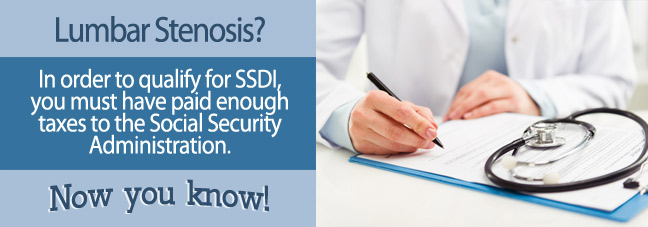Lumbar stenosis is a narrowing of the spinal cord in your lower back. As it progresses, it can cause severe pain and weakness in your lower body, impacting your ability to carry out daily activities and making it impossible to do jobs that require physical mobility.
If you are unable to work due to lumbar stenosis, you may be eligible for Social Security Administration (SSA) disability benefits.
When you are over 50, the SSA grid rules may increase your chances of a disability finding.
Grid Rules and Lumbar Stenosis
The SSA grid rules reflect the reality that the older you get the more challenges you face getting a job. Employers don’t often hire applicants aged 50 or over for an entry-level position, and older workers find it more difficult to transition to a new occupation calling for a different skillset.
As a result, the grid rules may find you disabled even when you can technically do a more sedentary job.
When using the grid to evaluate your disability claim, the SSA takes the following into account:
- Your age
- Your education: did you enter the workforce after high school or go on to college?
- The skills required at your previous job
- Whether those skills are transferrable to a new occupation
- Your residual functional capacity for physical work

What Type of Work Can Someone Do With This Condition?
Lumbar stenosis can cause pain, leg weakness, and muscle problems. Movement, particularly walking, can be painful, which is a problem when you work in a field that requires you to be physically active. If you are employed as a waiter or factory assembler, for example, working with lumbar stenonsis may prove impossible.
If you are over 50 and apply for disability benefits, your chances of being approved are much higher, even if you could technically do other jobs.
This is because few entry-level positions are offered to older workers and they don’t always have skills that can be transferred into a new field. Consequently, the SSA may find you disabled even if your grid suggests that you can still work.
Meeting a Blue Book Listing
When the SSA receives your application for benefits, it consults the Blue Book, which contains all disabling impairments, to see if you meet a listing. Lumbar Stenosis appears in Section 1.04 - Disorders of the spine.
According to this listing, you will be found disabled if medical imaging tests confirm the narrowing of your spinal cord and you experience pain and weakness in your lower body, making movement difficult.
Although you can technically file your own application for disability benefits, your chances of a successful claim are much higher if you engage the services of a Social Security Disability attorney or advocate.
The majority of applications are denied the first time around, mostly due to errors in the claim package, and an attorney or advocate can ensure that everything is submitted correctly and on time.
If you are not approved for benefits the first time around, they will help you file an appeal and represent you at the hearing. When all is said and done, an experienced Social Security Disability attorney or advocate can be a valuable ally in getting the benefits you deserve.